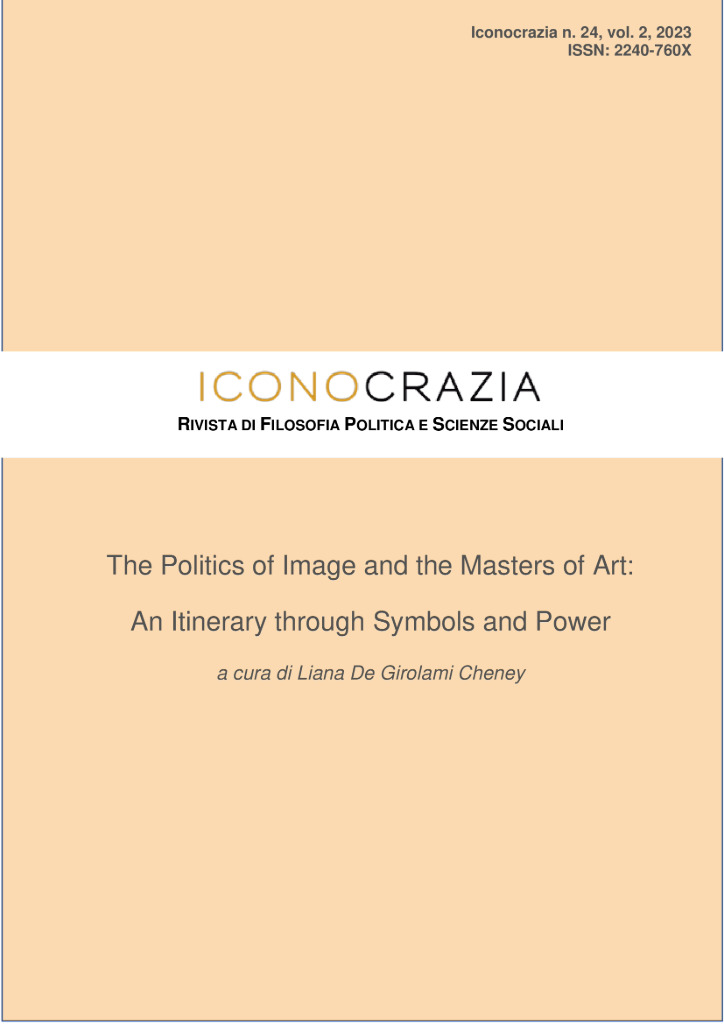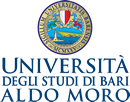Francesco Salviati’s Emblematic Imagery in the Sala dell’Udienza of Florence
DOI:
https://doi.org/10.15162/2240-760X/1866Parole chiave:
Sala dell’Udienza, Francesco Salviati, Paolo Giovio, fresco, symbolismAbstract
From 1543 to 1548, Francesco Salviati painted the fresco cycle depicting the triumph of the ancient Roman hero Marcus Furius Camillus in the Sala dell’ Udienza of the Palazzo Vecchio as the civic palace of the Florentine Republic was being transformed into a ducal residence for Cosimo I and his family. This study will focus on the emblematic imagery found in the dado or basamento of the audience hall. It will examine the depictions of the river gods in terms of ideas circulating among Salviati’s friends and associates, such as Paolo Giovio, the writer who shared an interest in allegorical images and emblems.Riferimenti bibliografici
Adelson, C. (1980). “Bachiacca, Salviati, and the Decoration of the Sala dell’ Udienza in the Palazzo Vecchio.” In idem, Le Arti del Principato Mediceo. Florence: SPES, pp. 141–200.
Ead. (1990). The Tapestry Patronage of Cosimo I de’ Medici: 1545–1553. PhD diss., New York University.
Allegri, E., and A. Cecchi. (1980). Palazzo Vecchio e i Medici Guida Storica. Florence: Studio per Edizione Scelete.
Barkan, L. (1999). Unearthing the Past: Archaeology and Aesthetics in the Making of Renaissance Culture.New Haven and London: Yale University Press.
Bober, P. P., and R. Rubinstein. (1986). Renaissance Artists and Antique Sculpture. Oxford: Oxford University Press; London: Harvey Miller.
Bolzani, G. P. V. (1976). Hieroglyphica (Lyon 1602). New York and London: Garland.
Bolzoni, M. S. (2019). “Allegory of the River Arno by Francesco Salviati in the Morgan Library and Museum.” Master Drawings, 57, no. 1, pp. 47–52.
Butters, S. (1996). The Triumph of Vulcan: Sculptors’ Tools, Porphyry, and the Prince in Ducal Florence.2 vols. Florence: Leo S. Olschki.
Cheney, I. (1963). Francesco Salviati (1510–1563). PhD diss., New York University. 4 vols., Ann Arbor, MI: UMI.
Cibelli, D. (2010). “Ekphrastic Treatments of Salviati’s Paintings and Imprese.” In F. A. de Armas (ed.), Ekphrasis in the Age of Cervantes. Lewisburg, PA: Bucknell University Press, pp. 32–56.
Cox-Rearick, J. (1984). Dynasty and Destiny in Medici Art: Pontormo, Leo X and the Two Cosimos. Princeton: Princeton University Press.
Curran, B. A. (1998/1999). “‘De Sacrarum Litterarum Aegyptiorum Interpretatione.’ Reticence and Hubris in Hieroglyphic Studies of the Renaissance: Pierio Valeriano and Annius of Viterbo.” Memoirs of the American Academy of Rome, 43/44, pp. 139–182.
Dumèzil, G. (1980). Camillus: A Study of Indo-European Religion as Roman History. Berkeley: University of California Press.
Giovio, P. (1976) [1559]. Dialogo dell’imprese militari et amorose di Monsignor Giovio Vescovo di Nocera; con un Ragionamento di Messer Lodovico Domenichi, nel medesimo soggetto [Lyon: Guglielmo Roviglio, 1559]. In S. Daniel (trans.), The Worthy Tract of Paulus Iovious (1585)[together with Giovio’s Dialogo dell’imprese militari et amorose]. Delmar, NY: Scholar’s Facsimiles and Reprints.
Grafton, A. (1993). The Hieroglyphics of Horapollo. Princeton: Princeton University Press.
Hall, J. (1979). Dictionary of Subjects and Symbols in Art. New York: Harper & Row.
Haskell, F., and N. Penny. (1981). Taste and the Antique: The Lure of Classical Sculpture 1500–1900. New Haven and London: Yale University Press.
Herendeen, W. H. (1981). “The Rhetoric of Rivers: The River and the Pursuit of Knowledge.” Studies in Philology,78, pp. 107–127.
Kleefisch-Jobst, U. (1988). “Die Errichtung der Grabmaler für Leo X. und Clemens VII. und die Projekte für die Neugestaltung der Hauptchorkapelle von S. Maria sopra Minerva.” Zeitschrift für Kunstgeschichte,51, pp. 535–536.
Lazzaro, C. (2011). “River gods: personifying nature in sixteenth-century Italy.” Renaissance Studies, 25, no. 1, pp. 87–88.
Livy. (1982). Rome and Italy: Books VI–X of The History of Rome from its Foundation. Trans. Betty Radice. London: Penguin.
Machiavelli, N. 1996. Discourses on Livy. Trans. H. C. Mansfield and N. Tarcov. Chicago and London: University of Chicago Press.
Mendelsohn, L. (1982). Paragoni—Benedetto Varchi’s “Due Lezzioni” and Cinquecento Art Theory. Ann Arbor, MI: UMI Research Press.
Mortari, L. (1992). Francesco Salviati. Rome: Leonardo-De Luca.
Nova, A. (1980). “Occasio pars Virtutis Considerazioni sugli Affreschi di Francesco Salviati per il Cardinale Ricci.” Paragone 31, no. 365, pp. 29–63.
Pierguidi, S. (2006). “La Allegorie di Francesco Salviati nella Sala Dell’Udienza di Palazzo Vecchio.” Paragone67, pp. 3–13.
Pilliod, E. (1998). Representation, Misrepresentation, and Non-Representation: Vasari and His Competitors. In P. Jacks (ed.), Vasari’s Florence: Artists and Literati at the Medicean Court. Cambridge, UK: Cambridge University Press, pp. 30–52.
Pliny The Elder. (1962). Natural History. Libri XXXVI–XXXVII. Ed. and trans. D. E. Eichholz. Vol. X. Cambridge, MA: Harvard University Press; London: William Heinemann.
Richelson, P. W. (1978). Studies in the Personal Imagery of Cosimo I de’ Medici, Duke of Florence. New York and London: Garland.
Rubenstein, N. (1967). “Vasari’s Painting of ‘The Foundation of Florence’ in the Palazzo Vecchio.” In D. Fraser, H. Hibbard, and M. J. Lewine(eds.),Essays in the History of Architecture Presented to Rudolf Wittkower. London: Phaidon.
Id. (1984). “The Renaissance Discovery of Antique River-god Personifications.” In Scritti di Storia dell’arte in Onore di Roberto Salvini. Florence: Sansoni.
Schlitt, M. W. (1991). Francesco Salviati and the Rhetoric of Style. PhD diss., The Johns Hopkins University, Ann Arbor, MI: UMI.
Ead. (1996). “The Patronage of Style: Francesco Salviati’s Frescoes of ‘Camillus’ and Cosimo I.” In D. G. Wilkins and R. L. Wilkins (eds.), The Search for A Patron in the Middle Ages and the Renaissance. Medieval and Renaissance Studies, vol. 12. Lewiston, Queenston, Lampeter: The Edwin Mellen Press, pp. 157–177 and 228–231.
Vasari, G. (1906). Le vite de’ più eccellenti pittori, scultori e architetti. Ed. Gaetano Milanesi. Vol. 7. Florence: G. C. Sansoni.
Id. (1912–1915). Lives of the Most Eminent Painters, Sculptors and Architects.10 vols. London: Philip Lee Warner Medici Society.
Id. (1984). Le vite de’ piu eccellenti pittori scultori e architettori nelle redazione del 1550 e 1568. Ed. R. Bettarini and P. Barrochi. 5 vols. Florence: Sansoni, 1966–1984.







